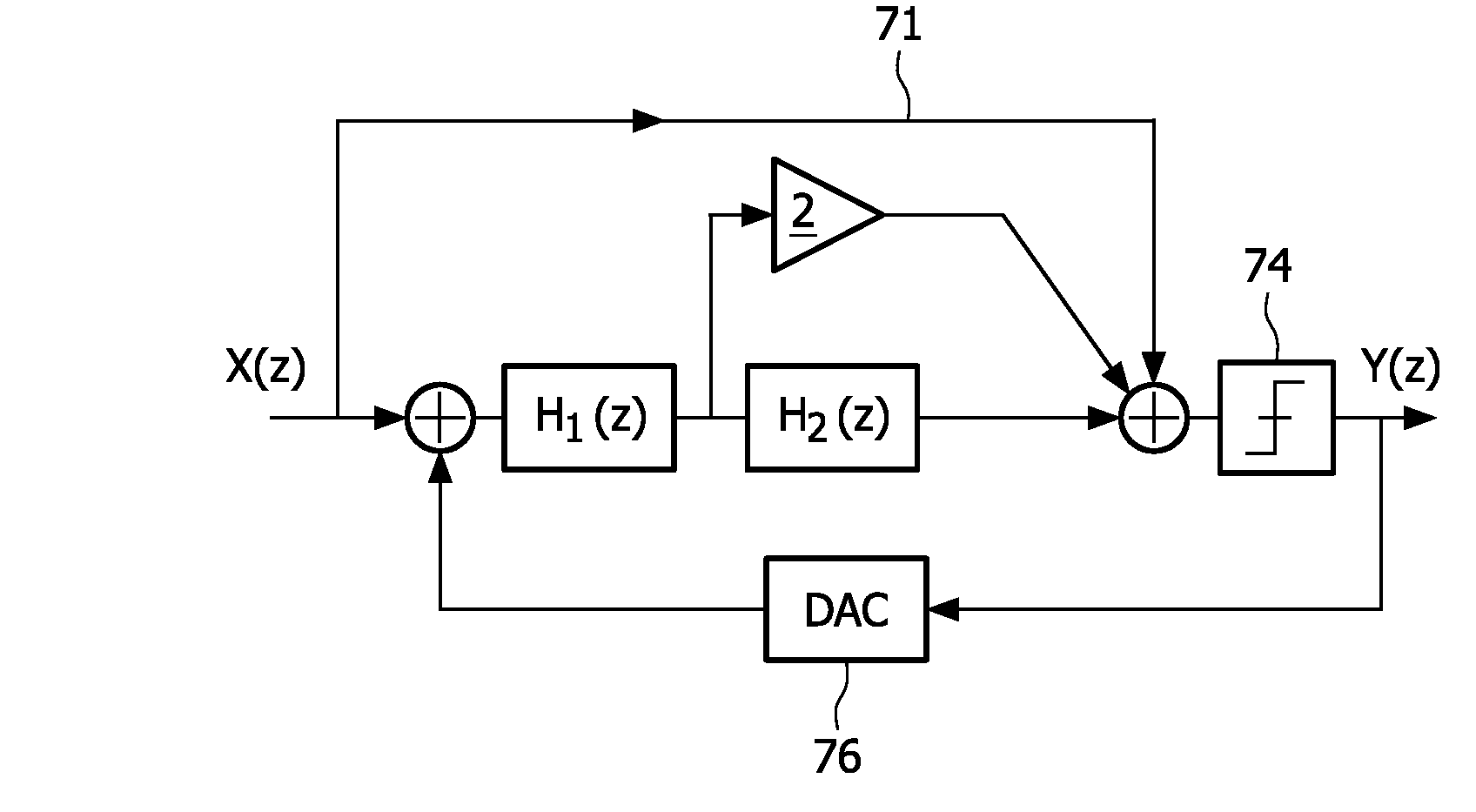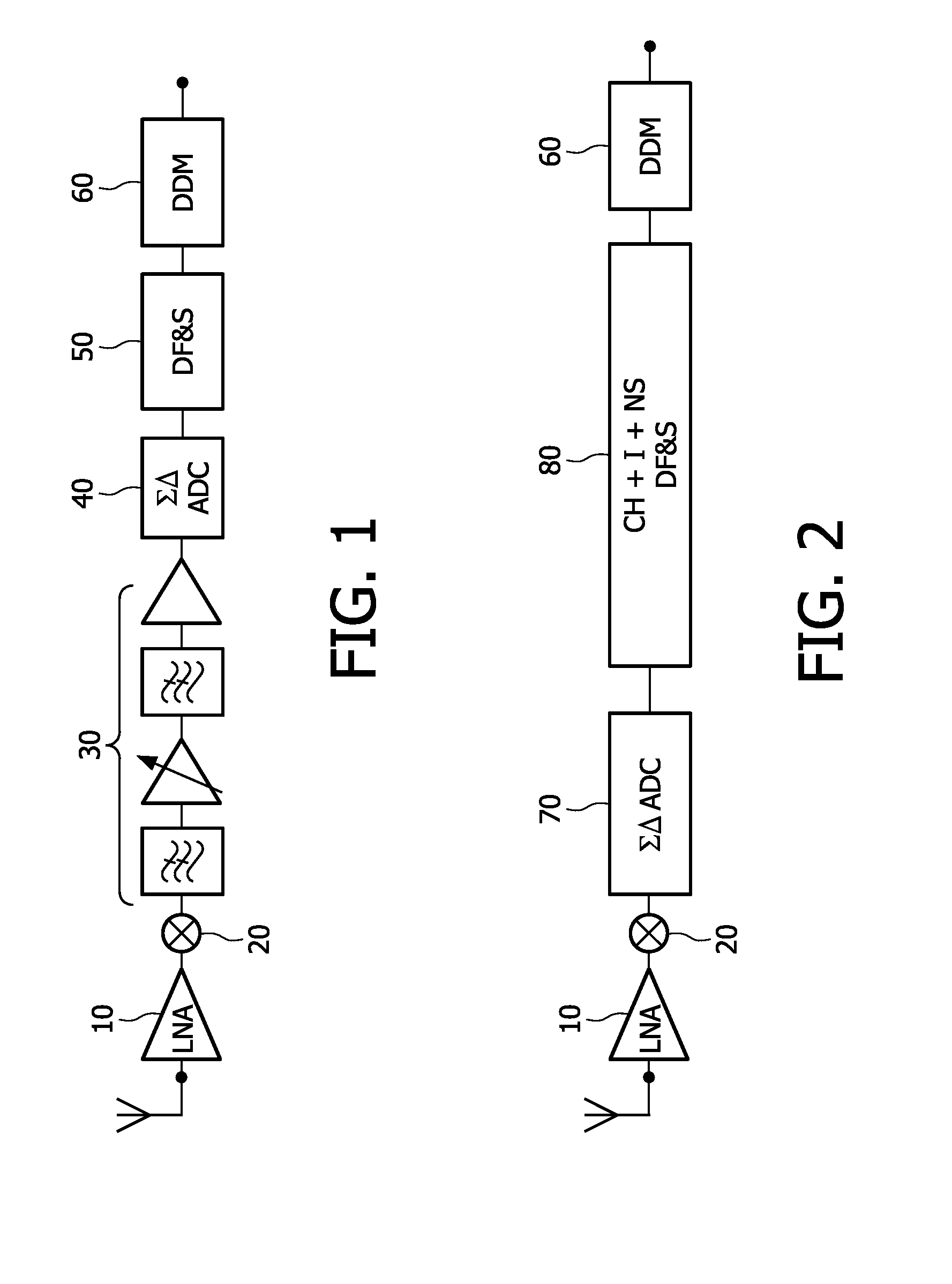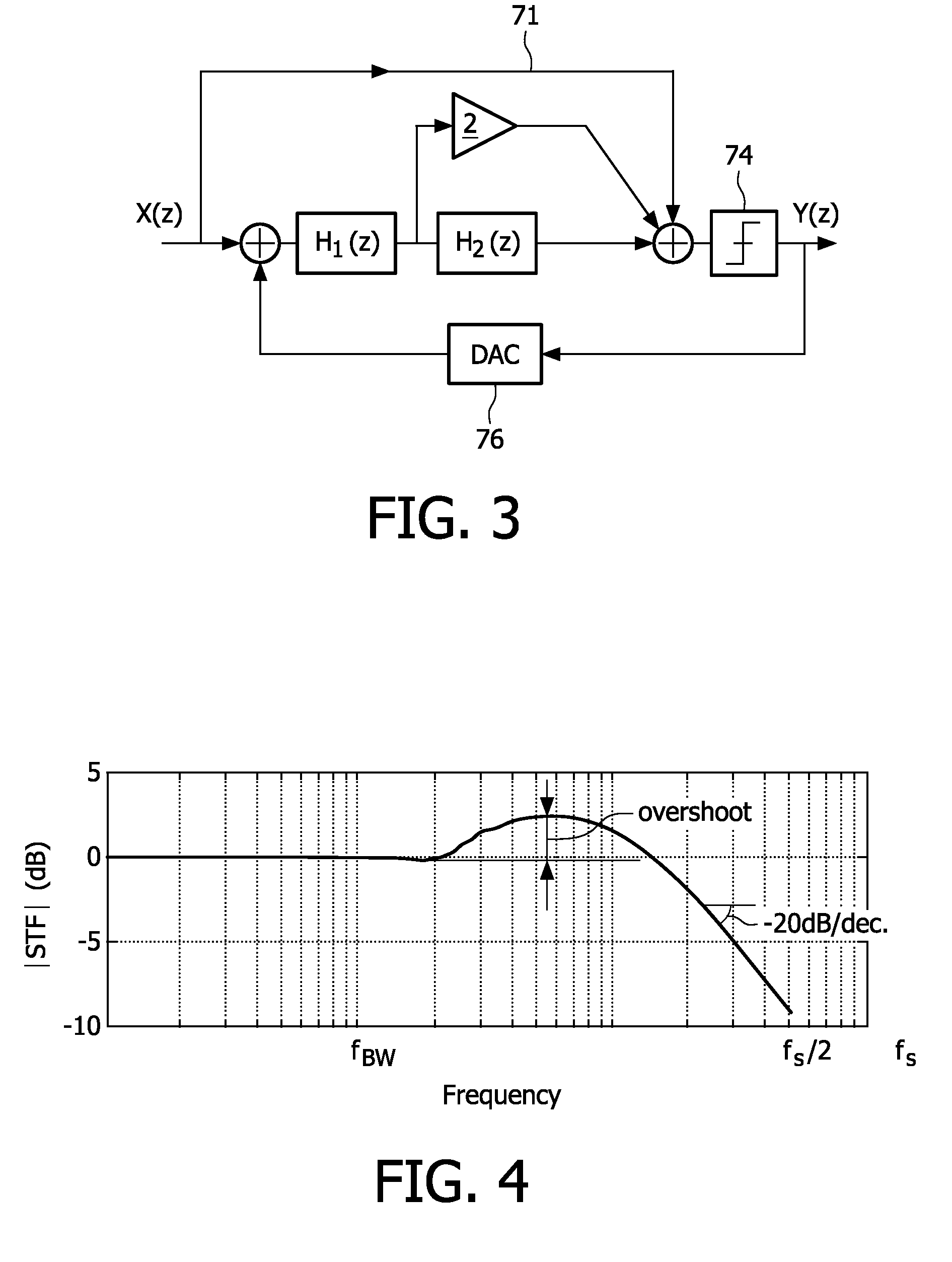Feedforward sigma-delta ad converter with an optimized built-in filter function
a technology of filter function and ad converter, which is applied in the field of sigma-delta ad converter, can solve the problems of increasing the specifications of the required adc, increasing the energy consumption of the adc b>40/b>, and increasing the frequency of adjacent channels towards the outpu
- Summary
- Abstract
- Description
- Claims
- Application Information
AI Technical Summary
Benefits of technology
Problems solved by technology
Method used
Image
Examples
Embodiment Construction
[0052]In the following, preferred embodiments of the present invention will be described in greater detail based on a sigma-delta ADC topology which can be used in a receiver architecture for GSM (Global System for Mobile communications) or EDGE (Enhanced Date rates for GSM Evolution).
[0053]As already mentioned, analog components are critical due to the fact that they introduce noise and distortion and thus degrade signal-to-noise ratio and hence receiver sensitivity, and require lots of calibration and control loops for correction. The preferred embodiments of the present invention provide the advantage of early digitization of the received signal, as illustrated in FIG. 2.
[0054]According to FIG. 2, an RF signal is received via an antenna and a LNA 10 and converted by a mixer circuit 20 into baseband frequency. Then, a sigma-delta ADC 70 according to the preferred embodiments is introduced at a very early stage, so that most of the signal processing is achieved in the digital domai...
PUM
 Login to View More
Login to View More Abstract
Description
Claims
Application Information
 Login to View More
Login to View More - R&D
- Intellectual Property
- Life Sciences
- Materials
- Tech Scout
- Unparalleled Data Quality
- Higher Quality Content
- 60% Fewer Hallucinations
Browse by: Latest US Patents, China's latest patents, Technical Efficacy Thesaurus, Application Domain, Technology Topic, Popular Technical Reports.
© 2025 PatSnap. All rights reserved.Legal|Privacy policy|Modern Slavery Act Transparency Statement|Sitemap|About US| Contact US: help@patsnap.com



